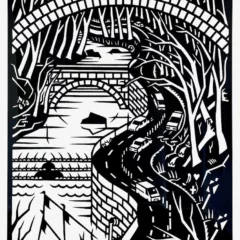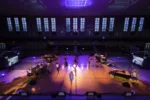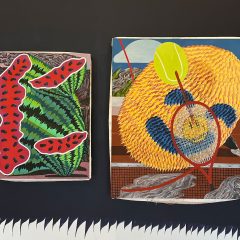Back in 1998, when a landlord wanted members of the nascent Space 1026 to sign a two-year lease at the end of their first year, several of them bristled at the idea. “I didn’t know what I would be doing in a year from that point, let alone two,” recalls founding member Andrew Jeffrey Wright. “And now twenty-one years later, here we are.”
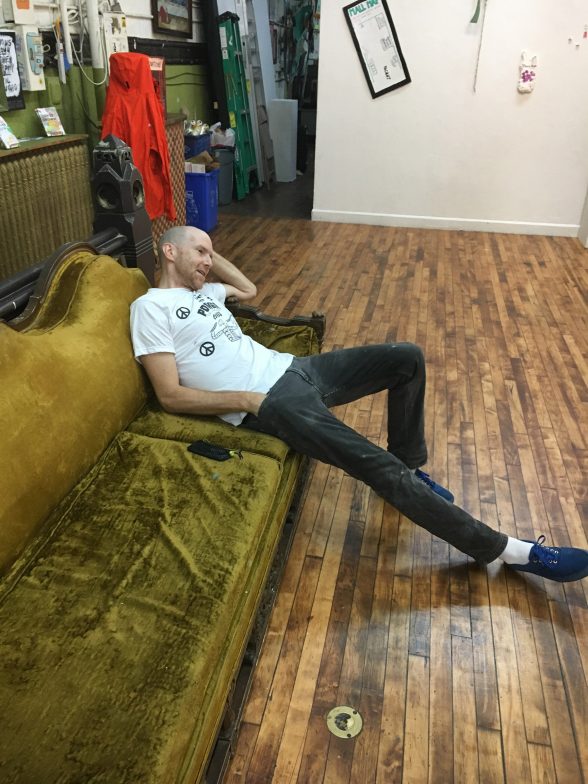
It was teeming with rain on a Sunday afternoon when I visited Chinatown’s Space 1026 to explore its hallways brimming with art and oddities. As I arrived, there were a couple of artists already inside working on projects or taking inventory of mountains of gear and artwork. The building where they have created and exhibited work for over two decades was recently sold, and so members of Space 1026 — who plan to retain their name despite the impending move —are actively searching for a new location to set up shop.
Looking Back
When the initial crew scouted out the gigantic property on the second floor of 1026 Arch Street back in August of 1997, their plan was to not only set up studios for t-shirt-, skateboard-, and art-making, but to ensure there was a place for them to skate as well. Though many of the early members were on a trip to the west coast to sell their shirts and boards when Jeff Wiesner found the spot, they agreed to rent it, and quickly began to renovate the dusty interior. It didn’t hurt that the location was practically in Center City and close to public transit either.
Within six months, the group had installed an indoor skate ramp and discovered they still had ample room for a gallery, which was a major bonus. At this stage, most of the group had never really exhibited their artwork, but when Space 1026 began hosting openings, word quickly spread among their friends and within the broader Philly art community.
“At the time, we were really inspired by places like Shepard Fairey’s studio, Dirt Palace and Fort Thunder in Providence, and Alleged Gallery in New York,” Wright explains. “We wanted a place where people could hang out, skate, and work without necessarily collaborating.”

Before long, outsiders also began to take notice — including the authorities. In March of 1999, Police busted a crowded Shepard Fairey event and Space 1026 was briefly shut down for L&I code violations. Shortly thereafter, the landlord also forced members to remove the skate ramp, which he viewed as a noisy liability. It seemed then as if 1026 might get evicted, but it took almost another two decades for the other shoe to drop.
To 15-year member Roman Hasiuk, 1026 has always been more like a dysfunctional family than a unified vision. He likens it to a game of Katamari Damacy, where artists amass more and more objects, drawing inspiration from the chaos. “Nobody ever really talked that much about art,” he chuckles, “Art-making is deeply personal, and there were no preconceived notions about what anyone was doing.”
Looking Forward
This summer, the dire but not wholly surprising news was announced that a New York developer had purchased 1026 Arch Street. Stories like this are becoming increasingly common in Philly, and arts spaces frequently feel the heat. While the brick and iron facade of this impressive old building, originally the Methodist Board of Church Extension, is protected by a historical designation, the interior, with all of its architectural details and walk-in safes will likely be completely rehabbed by the new owner. With it, the artistic allure of Space 1026’s improvised additions will become history too.
Not so for the collective itself. Losing their longtime base is certainly a setback, but Space 1026 members are determined to defy the Philly squeeze and pursue a new home for their artistic ventures. 1026 has always grown in an organic fashion, and this transition may be a boon for their continued creativity. After all, the building is merely a space — artists are what make any collective flourish.
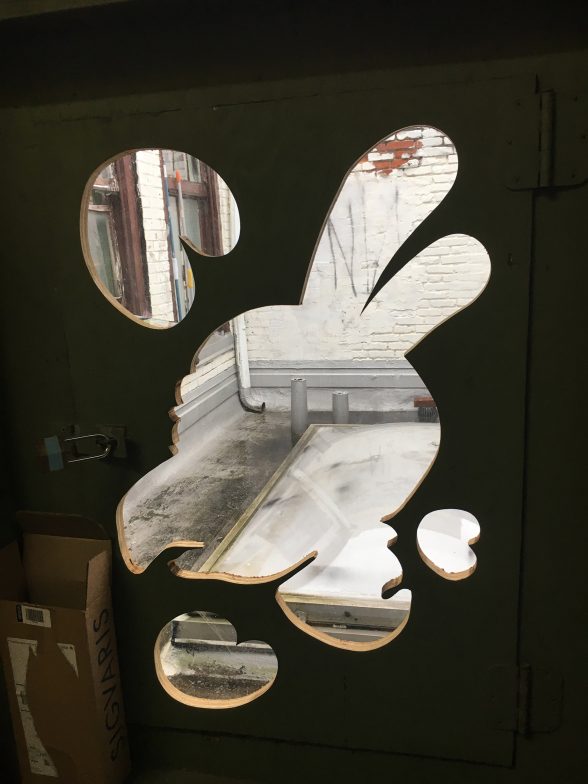
Fortunately for everyone involved, the new owner has been quite accommodating with his timeline, and has given the collective until the new year to vacate. They have been actively visiting potential new addresses — five so far— but nothing is a standout yet. Keeping the needs and desires of roughly 17 current members in check while searching for a comparably-sized (5,000 sq ft) space has proved to be quite the balancing act. There is no guarantee that everyone will relocate, but 1026 has always had a rotating cast.
Miriam Singer, who has had a studio at Space 1026 since 2013, joined partially for the room, but also for the communal setting. “My hope is that we can buy a building where people want to go for shows. It will always be important for us to be a destination.”
Space 1026 is currently running a GoFundMe campaign in order to raise money for the move, and they have a couple more shows scheduled during the final months at their current address. Any leads on new locations are welcome, but it is safe to say that regardless of where they land, the adaptability, tenacity, and creative drive of this community of artists will persist.
Want more about Space 1026? See Artblog’s many posts here.
Want to hear Andrew Jeffrey Wright? Listen to our Artblog Radio podcast with him in 2011.



